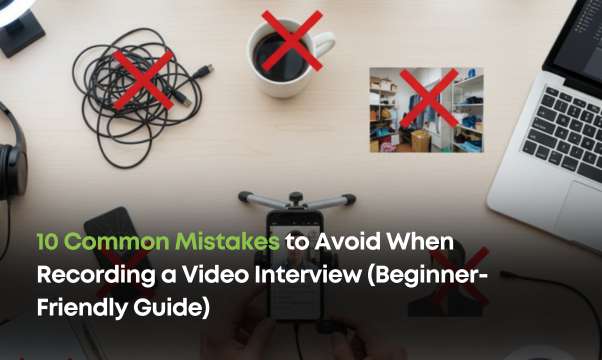Podcasts have rapidly become one of the most popular formats of content in today’s digital age. With millions of episodes available across various platforms, creators constantly seek ways to maximize their reach and impact. One of the most effective yet often overlooked strategies is Transcription - the process of converting spoken content into written text. Whether you transcribe audio to text or video to text, incorporating transcription services into your workflow can provide massive benefits to both, creators and their audiences. Below, we’ll explore ten compelling reasons why transcribing your podcast can lead to greater success.
Here are the 10 Reasons Why Transcribing Your Podcast Can Boost Its Success:
1. Improved Accessibility
Not everyone consumes content in the same way. Creating accessible options can make a significant difference in reaching more people. By using audio transcription or video transcription, you can open up your podcast or video content to a wider audience; including individuals who are deaf or hard-of-hearing, as well as those who prefer to read rather than listen. Transcripts can also help non-native speakers understand your content better and improve its discoverability through search engines. Accessibility is key to inclusivity; offering a transcript ensures that your content can be enjoyed by everyone, regardless of their individual needs or preferences. It’s a simple step that can make your message more impactful and far-reaching.
2. Boost SEO Rankings
Search engines can’t listen to audio or video, but they can crawl through text. Which is why transcription is such a powerful tool for content creators. When you transcribe your podcast, the text becomes a valuable asset for search engine optimization (SEO), allowing search engines to index your content more effectively. By converting spoken words into written text, you ensure that the keywords, phrases and topics discussed in your podcast are visible to search engines. This improves your chances of appearing in search results and makes it easier for potential listeners to discover your content. Additionally, transcriptions can be repurposed for blog posts, social media captions and newsletters; further boosting your podcast’s visibility and reach. Using transcription services is a simple yet impactful way to enhance your podcast’s discoverability and grow your audience.
3. Broaden Your Audience
Some people prefer to skim through text rather than listen to or watch lengthy audio or video content. A written transcript not only makes your podcast more accessible to those who can't listen in real-time, but it also caters to individuals who prefer reading or need a quick way to reference specific information. By offering a transcript, you ensure that your content reaches a wider audience (eg. the hearing-impaired), non-native speakers who find reading easier than listening or busy professionals who want to consume information quickly. These are valuable demographics that you wouldn’t want to overlook, since they can significantly expand your podcast’s reach and impact.
4. Enhanced Content Repurposing
When you transcribe audio to text or video to text, you unlock a wealth of opportunities to repurpose your content in meaningful ways. Transcripts can easily be reshaped into blog posts that drive traffic to your website, engaging social media captions that boost visibility, informative newsletters that connect with your audience or even comprehensive eBooks that establish your expertise. Transcription not only saves time but ensures you get more mileage out of your hard work, allowing your content to reach broader audiences in a variety of formats. It’s an efficient way to maximize your creative efforts, while staying relevant across different platforms.
5. Cater to International Audiences
Audio transcription converts spoken content into written text, making it easier to adapt and translate into other languages. This process is especially useful for creators looking to expand their reach to a global audience. By providing a transcript, you give listeners unfamiliar with the original language, an opportunity to easily consume your podcast.
6. Better Listener Retention
Providing transcripts for your podcast offers your audience a convenient way to revisit key moments and insights. With a transcript, they can easily search for specific discussions, memorable quotes or important references; without having to rewind the entire episode. This feature transforms your podcast into a more accessible and user-friendly resource, making it especially valuable for those looking to take notes or share content with others. By offering this added convenience, you not only enhance the listener experience but also encourage repeat visits and foster listener loyalty.
7. Support Multitasking
Many people multitask while consuming content, and a transcript enables this habit. Whether they’re working on a project, studying for an exam, exercising at the gym or commuting to work, having both audio and text options provides them flexibility to consume the content you create. Your audience can switch seamlessly between formats, choosing to listen when they’re on the go or read when they need to focus on specific details. This dual accessibility ensures your content fits into their busy lives more effectively, thus enhancing engagement.
8. Simplify Collaboration and Research
When collaborating with guests, partners or even within your team, having a podcast transcript can be a game-changer. It simplifies brainstorming sessions by providing a written record of ideas discussed, makes reference checks quicker and more accurate, and streamlines content planning by offering a clear view of key points. Audio and video transcription ensure clarity, avoid miscommunication and helps everyone stay on the same page.
9. Create a Resource Archive
A written transcript of each episode creates a searchable and organized archive of your podcast, making it easier to revisit past content. Transcripts allow you and your audience to quickly find specific topics, quotes or discussions; without having to re-listen to entire episodes. To the creator, transcriptions offer the option to reference past episodes for inspiration to create fresh content.
10. Professionalism and Credibility
Offering transcripts is a signal that you are a serious content creator, who values your audience’s time and unique needs. By providing written versions of your audio or video content, you convey that you are willing to go that extra mile to cater to unique audience preferences. Investing in transcription services highlights your commitment to quality, accessibility, and professionalism - qualities that build credibility and strengthen connections with your listeners. It’s a simple step that shows you care about making your content inclusive and user-friendly for everyone.
In conclusion
Transcribing your podcast is more than simply converting dialogue into text; it’s an invaluable strategy to amplify your podcast’s reach, boost engagement and cater to diverse audiences. Whether you opt to transcribe audio to text or transcribe video to text formats, leveraging professional transcription services will unlock opportunities for growth you never imagined. Don’t underestimate the power of text - it may just be the key to transforming your podcast into a standout success story.
FAQs
1. How can transcribing my podcast episodes benefit my audience?
Transcriptions make your podcast accessible to a wider audience, including those who are hard of hearing or prefer reading over listening. It ensures everyone can engage with your content in a way that suits their needs.
2. Why does transcribing my podcast improve SEO and discoverability?
Search engines can’t index Audio, but they can indeed index Text. Transcriptions provide keyword-rich content that improves your podcast’s visibility in search results, helping potential listeners find you more easily.
3. How does transcribing my podcast help me as a content creator?
Transcriptions can be transformed into blog posts, social media snippets, newsletters, or other content formats; thus extracting maximum value of your podcast episodes. It also serves as a source of inspiration when you're looking for topics to create fresh content on.
4. Will transcribing my podcast make it easier to create show notes?
Absolutely. Transcriptions give you a clear and detailed reference to quickly craft comprehensive show notes, saving time while ensuring key points and highlights are accurately captured.






